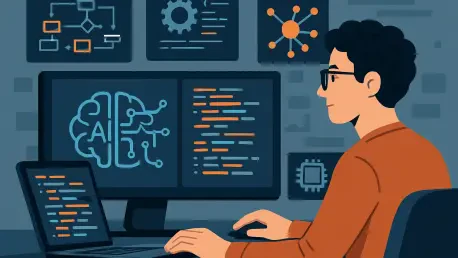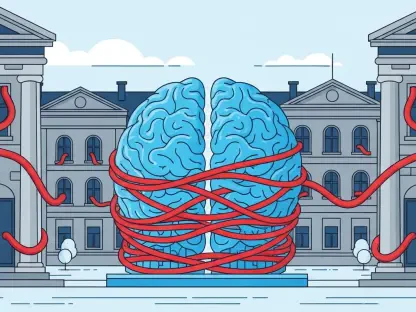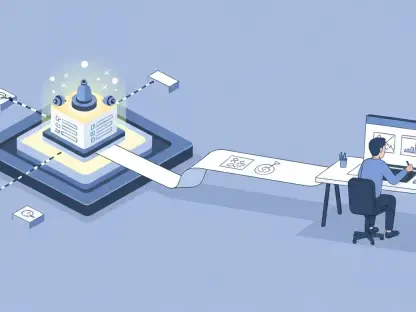I’m thrilled to sit down with Vijay Raina, a renowned expert in enterprise SaaS technology and tools, whose thought leadership in software design and architecture has shaped innovative approaches to software development. With a deep understanding of how technology can transform workflows, Vijay has been at the forefront of integrating cutting-edge solutions like AI agents into the software development lifecycle. In this interview, we dive into the evolution of software tools, the role of AI in enhancing productivity, the importance of maintaining craft and quality over mere speed, and the challenges and opportunities that lie ahead for teams embracing these technologies.
How did your journey into software and technology begin, and what early experiences shaped your passion for this field?
My journey started somewhat unexpectedly through a fascination with problem-solving. As a kid, I was always tinkering with things, trying to figure out how they worked. But the real spark came when I got my hands on my first computer and stumbled upon a tutorial in a magazine about building a basic website. Typing out raw HTML and seeing it come to life in a browser was like magic. That moment hooked me. Later, I got into building small games, which taught me the value of iteration and user feedback. Those early projects weren’t just hobbies; they shaped my approach to software as something that’s both creative and functional, pushing me toward a career in tech startups and eventually SaaS.
What do you consider the most significant shifts in software development since you started, and how have they influenced your work?
The biggest shift has to be the move from on-premises, self-managed systems to cloud-native architectures. Early in my career, we were wrestling with databases like MongoDB on our own servers, dealing with scaling issues that could sink a project overnight. Back then, there weren’t managed platforms to lean on, so every hiccup was a hard-earned lesson. Today, developers have access to robust cloud tools that handle much of that heavy lifting, allowing us to focus on building rather than maintaining infrastructure. This shift has influenced my work by emphasizing the importance of adaptability—tools change, and so must our strategies. Now, we’re seeing another wave with AI integration, which is just as transformative, if not more.
Can you give us an overview of the kind of SaaS tools you’ve worked on and how they aim to improve software development workflows?
I’ve been deeply involved in developing SaaS platforms that streamline how software teams plan, build, and ship products. Think of tools that act as central hubs for managing issues, projects, and roadmaps—essentially, a single place where ideas turn into deliverables. These tools are designed to be intuitive, cutting down on the clutter of traditional project management by focusing on speed and clarity. What sets them apart is their ability to integrate seamlessly with other systems and, more recently, to incorporate automation and AI to handle repetitive tasks. The impact is clear: teams spend less time on administrative overhead and more on creating value, often seeing faster iteration cycles as a result.
There’s a lot of excitement around AI agents in software development. How do you define an AI agent in the context of the tools you’ve built or used?
In the context of the tools I’ve worked on, an AI agent is essentially a virtual team member that can take on specific tasks within a workflow. These agents are often cloud-based, integrated into platforms where they can be assigned work just like a human—whether that’s triaging issues, suggesting fixes, or even drafting code. They’re built to operate with some level of autonomy, using reasoning and tool access to complete tasks, but they still often need human oversight. I see them as a bridge between raw automation and human judgment, enhancing productivity by taking on the mundane while leaving the complex, creative work to developers.
How do AI agents fit into the day-to-day operations of a software team, and what specific tasks do they handle effectively?
AI agents are increasingly embedded into daily operations as part of the workflow orchestration. For instance, in issue tracking systems, they can be assigned small bugs or even trivial fixes like correcting a typo on a website. The process often starts with aggregating context—stack traces, user reports, or past comments—and feeding that to the agent, which then proposes a solution or creates a pull request. They’re particularly effective for repetitive or well-defined tasks, like identifying security vulnerabilities in code reviews or suggesting assignees for incoming issues based on expertise. This frees up developers to focus on higher-value work, like designing new features or refining user experiences.
What do you think are the main reasons some developers hesitate to fully adopt AI agents in their workflows?
I think hesitation often stems from a mix of bad early experiences and uncertainty about reliability. If a developer spends time setting up a task for an AI agent only to get subpar results, it feels like wasted effort—especially on smaller issues they could’ve handled faster themselves. There’s also a cultural piece; some worry about over-reliance or fear that AI might overshadow human skill. I’ve seen cases where the context provided to the agent wasn’t detailed enough, leading to frustration. It’s a learning curve, and not everyone is ready to invest the time to master it, especially when they’re already swamped with deadlines.
How can teams overcome skepticism and integrate AI agents more effectively into their processes?
Overcoming skepticism starts with setting realistic expectations and experimenting on a small scale. Teams should begin with low-risk tasks—think minor bug fixes or automated triaging—and gradually build trust in the technology. It’s also crucial to refine how tasks are described to agents; providing clear, detailed prompts can make a huge difference in outcomes. Encouraging a mindset of iteration helps too—if something doesn’t work, analyze why and adjust rather than abandon the tool. Lastly, leadership should foster a culture that views AI as a partner, not a replacement, ensuring developers see it as a way to enhance their craft rather than diminish their role.
You’ve emphasized that craft and quality should take precedence over speed and scale. Can you elaborate on how teams can maintain that focus when using AI tools?
Absolutely. The allure of AI is often tied to speed—getting things done faster—but if that comes at the cost of quality, you’ve lost the plot. The key is to use AI to offload the grunt work, freeing up time for developers to focus on craftsmanship. For example, if an agent handles a spelling fix or a minor bug, that’s time saved to iterate on a feature with customers or polish a user interface. At the same time, maintaining quality means tight feedback loops—constant deployment and testing with real users, which AI can accelerate by catching issues early. It’s about striking a balance where speed supports quality, not undermines it, ensuring every release feels thoughtful and well-executed.
What’s your forecast for the future of AI agents in software development over the next few years?
I believe AI agents will become even more integrated into the fabric of software development, evolving from task-specific tools to more holistic collaborators. Over the next few years, I expect to see agents that not only handle coding tasks but also contribute to strategic planning—like suggesting project priorities based on user data or predicting potential bottlenecks. The technology will likely mature to require less human steering, with better context awareness and decision-making. However, the human element will remain vital for creativity and oversight. My forecast is that teams who embrace and adapt to these agents early will gain a significant edge, shaping a future where software development is faster, smarter, and still deeply rooted in human ingenuity.









